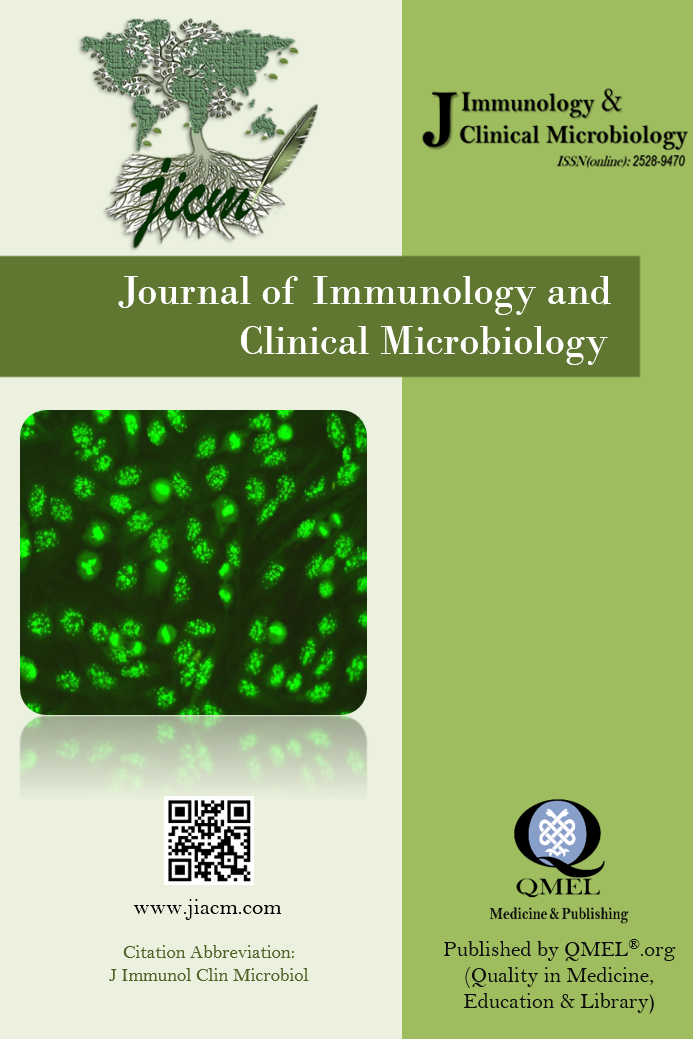Emergence of multidrug resistant uropathogenic Escherichia coli (UPEC) strains isolated from a hospital in Bangladesh
Emergence of multidrug resistant uropathogenic Escherichia coli (UPEC) strains isolated from a hospital in Bangladesh
Background:
Multidrug Resistant Uropathogenic Escherichia
coli (UPEC) is becoming a global concern. Therefore, the purpose of the
present study was to see the status of multidrug resistant UPEC strains.
Materials and Methods: This retrospective study was conducted at a private
Hospital in Dhaka city from July 2013 to December 2013 for a period of six
months. All the patients who were attended in the OPD or admitted in the IPD of
the hospital presenting the clinical features of UTI at any age with both sexes
were included as the study population. Patients without significant pus cell
within urine, patients under antibiotic therapy or incomplete data were
excluded from this study. E. coli was
isolated and identified by standard methods and antibiotic sensitivity testing
was performed by disk diffusion method.
Results: A
total number of 57 UPEC were isolated of which 9 isolates were isolated from
male and 48 isolates were from female. Resistant to four groups, five groups,
six groups and seven groups of drugs were found in 17.5% (95% CI 7.64 to
27.36%), 14.0% (95% CI 4.99 to 23.01%), 10.5% (95% CI 2.54 to 18.46%) and 8.8%
(95% CI 1.45 to 16.15%) uropathogenic E.
coli respectively. The total number of MDR UPEC was 92.9% (95% CI 86.23 to
99.57%). In a total multidrug resistant uropathogenic E. coli were found in 92.9% isolates.
Conclusion: In
conclusion multidrug resistant uropathogenic E. coli is found in a very high rate.
Keywords:
Multidrug resistant, uropathogenic, Escherichia coli, emergence UPEC,
___
- Foxman B, Brown P. Epidemiology of urinary tract infections: transmission and risk factors, incidence, and costs. Infect Dis Clin North Am 2003; 17: 227-241.
- Kodner CM, Thomas Gupton EK. Recurrent urinary tract infections in women: diagnosis and management. Am Fam Physician 2010; 82: 638-643.
- Dason S, Dason JT, Kapoor A. Guidelines for the diagnosis and management of recurrent urinary tract infection in women. Can Urol Assoc J 2011; 5: 316-322
- Foxman B, Barlow R, D’Arcy H, Gillespie B, Sobel JD. Urinary tract infection: self-reported incidence and associated costs. Ann Epidemiol 2000; 10: 509-515.
- Bours PHA, Polak R, Hoepelman AIM, Delgado E, Jarquin A, Matute AJ. Increasing resistance in community-acquired urinary tract infections in Latin America, five years after the implementation of national therapeutic guidelines. Int J Infect Dis 2010; 14: e770-e774.
- van de Sande-Bruinsma N, Grundmann H, Verloo D, Tiemersma E, Monen J, Goossens H, et al. European Antimicrobial Resistance Surveillance S. Antimicrobial drug use and resistance in Europe. Emerg Infect Dis 2008; 14: 1722.
- Manges AR, Tabor H, Tellis P, Vincent C, Tellier P-P. Endemic and epidemic lineages of Escherichia coli that cause urinary tract infections. Emerg Infect Dis 2008; 14: 1575.
- Wiles T, Kulesus R, Mulvey M. Origins and virulence mechanisms of uropathogenic Escherichia coli. Exp Mol Pathol 2008; 85: 11–19.
- Nicolas-Chanoine MH, Blanco J, LeflnGuibout V, Demarty R, Alonso MP, Canica MM, et al. Intercontinental emergence of Escherichia coli clone O25:H4–ST131 producing CTX-M-15. J Antimicrob Chemother 2008; 61: 273–281.
- Bashir MF, Qazi JI, Ahmad N, Riaz S. Diversity of urinary tract pathogens and drug resistant isolates of Escherichia coli in different age and gender groups of Pakistanis. Trop J Pharm Res 2008; 7: 1025-1031.
- Delgado-Valverde M, Sojo-Dorado J, Pascual Á, Rodríguez-Baño J. Clinical management of infections caused by multidrug-resistant Enterobacteriaceae. Therap Adv Infect Dis 2013; 1: 49-69.
- Magliano E, Grazioli V, Deflorio L, Leuci AI, Mattina R, Romano P, Cocuzza CE. Gender and age-dependent etiology of community-acquired urinary tract infections. Scientific World J 2012; 2012.
- Karlowsky JA, Hoban DJ, DeCorby MR, Laing NM, Zhanel GG. Fluoroquinolone-resistant urinary isolates of Escherichia coli from outpatients are frequently multidrug resistant: results from the North American Urinary Tract Infection Collaborative Alliance-Quinolone Resistance study. Antimicrob Agents Chemother 2006; 50: 2251-2254
- Zhanel GG, Hisanaga TL, Laing NM, DeCorby MR, Nichol KA, Weshnoweski B, Johnson J, Noreddin A, Low DE, Karlowsky JA, Hoban DJ. Antibiotic resistance in Escherichia coli outpatient urinary isolates: final results from the North American Urinary Tract Infection Collaborative Alliance (NAUTICA). Int J Antimicrob Agents 2006; 27: 468-475.
- Manges AR, Johnson JR, Foxman B, O'Bryan TT, Fullerton KE, Riley LW. Widespread distribution of urinary tract infections caused by a multidrug-resistant Escherichia coli clonal group. N Engl J Med 2001; 345: 1007-1013.
- Hawkey PM, Jones AM. The changing epidemiology of resistance. J Antimicrob Chemother 2009;64 (suppl 1): i3-10.
- Van Duin D, Kaye KS, Neuner EA, Bonomo RA. Carbapenem-resistant Enterobacteriaceae: a review of treatment and outcomes. Diagn Microbiol Infect Dis 2013; 75: 115-120.
- Hoban DJ, Nicolle LE, Hawser S, Bouchillon S, Badal R. Antimicrobial susceptibility of global inpatient urinary tract isolates of Escherichia coli: results from the Study for Monitoring Antimicrobial Resistance Trends (SMART) program: 2009–2010. Diagn Microbiol Infect Dis 2011; 70: 507-511.
- Yayın Aralığı: Yılda 4 Sayı
- Başlangıç: 2016
- Yayıncı: Erkan YULA
